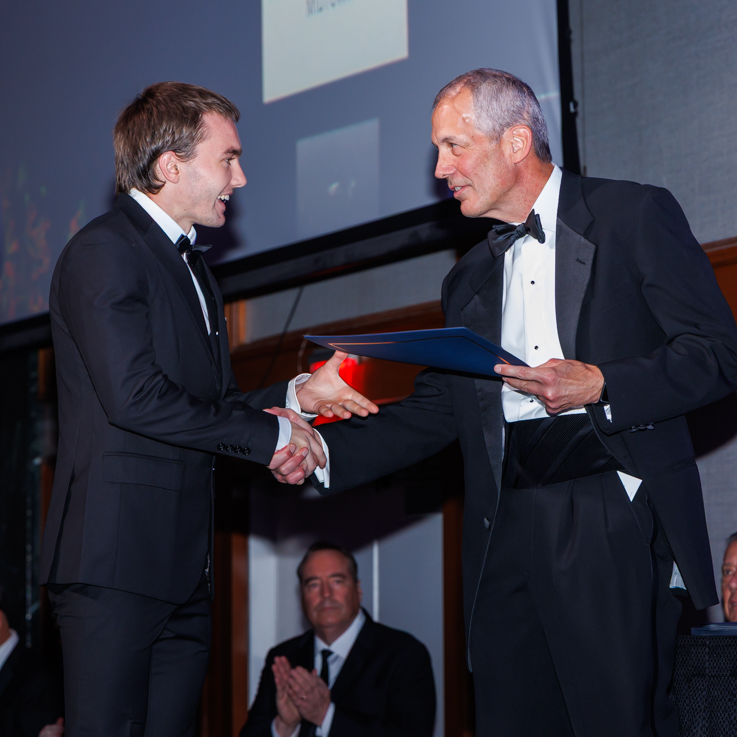News Story
Spacecraft carrying Adomaitis thin film experiment docks with the International Space Station
Early on Saturday, Nov. 17, a Northrop Grumman Antares rocket successfully launched from NASA’s Wallops Island Flight Facility for a resupply mission to the International Space Station (ISS). Aboard the Cygnus cargo vessel is MISSE-10, and work by Professor Raymond Adomaitis’ (ChBE/ISR) Thin Film Group. MISSE-10 is a materials science experiment that will expose a range of material samples to the surprisingly active environment of low Earth orbit (LEO) for over one year in space; the samples then will be returned to Earth for further evaluation. The Cygnus successfully docked with the ISS on Nov. 19. Watch video here.
About the thin film experiment
Waste heat from the ISS is radiated to space by large white panels. The pigment used to coat these radiators is designed for optimal emission of waste thermal radiation and minimal absorption of solar radiation. Because the electrically insulating pigment can become differentially charged in LEO, the Adomaitis group has been working in conjunction with NASA’s Goddard Space Flight Center to develop ultra-thin conductive coatings that do not interfere with the optical properties of the pigments and allow for the dissipation of static charge.
With the support of NASA and the National Science Foundation, a special atomic layer deposition (ALD) reactor for depositing indium oxide (IO) and tin-doped indium oxide (ITO) films was constructed on the University of Maryland campus.
"Because of the atomic-level control of film thickness and the wide range of materials that can be deposited, atomic layer deposition processes have great potential for spacecraft applications where weight reduction and material performance are critical," Adomaitis says.
The reactor was used to deposit conductive thin films (less than 100 atoms thick) of indium IO and ITO on pigment nanoparticles to create the four samples being sent into space on Saturday. Researchers working on the project included Adomaitis' ChBE Ph.D. students Hossein Salami and Alan Uy, ChBE M.S. student Aarathi Vadapalli, and Chemical Engineering M.Eng. student Corinne Grob, in conjunction with Adomaitis' former student Vivek Dwivedi (PhD ChE 2010), now the associate head of the NASA Goddard Space Flight Center's Thermal Engineering Branch.
More details of the Adomaitis group's MISSE10 work—also known as the Innovative Coatings Experiment—can be found here on NASA’s website.
Launch details
The spacecraft launched on an Antares 230 Rocket from the Virginia Mid-Atlantic Regional Spaceport’s Pad 0A at Wallops on the company’s 10th cargo delivery flight, and arrived at the orbital laboratory Monday, Nov. 19.
Video. You can watch the ISS robotic arm capture the Cygnus capsule here.
Published November 15, 2018










